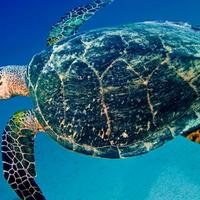Turtles and Plastic – level 3
Schildkröten und Plastik - Stufe 3
Χελώνες και πλαστικό - επίπεδο 3
Tortugas y plástico - nivel 3
لاک پشت ها و پلاستیک - سطح 3
Les tortues et le plastique - niveau 3
Tartarughe e plastica - livello 3
カメとプラスチック – レベル 3
거북이와 플라스틱 - 레벨 3
Żółwie i plastik - poziom 3
Tartarugas e plástico - nível 3
Черепахи и пластик - уровень 3
Kaplumbağalar ve Plastik - seviye 3
Черепахи та пластик - рівень 3
海龟和塑料 – 3 级
海龜和塑膠 – 3 級
Global currents deposit marine debris from all over the world on Kenya's beaches which is a big problem for turtles.
世界の海流は、ケニアのビーチに世界中から海洋ゴミを堆積させます。これは、カメにとって大きな問題です。
전 세계의 해양 쓰레기가 케냐의 해변에 쌓이는데, 이는 거북이에게 큰 문제입니다.
Глобальные течения осаждают морской мусор со всего мира на пляжах Кении, что является большой проблемой для черепах.
Küresel akıntılar, kaplumbağalar için büyük bir sorun olan Kenya'nın kumsallarında dünyanın her yerinden deniz kalıntılarını biriktiriyor.
Глобальні течії осідають морське сміття з усього світу на пляжі Кенії, що є великою проблемою для черепах.
A report found that 23% of juvenile and 54% of post-hatchling turtles ingested plastic, suggesting that young turtles are more likely to die than the adults by eating plastic.
報告によると、幼体の23%と孵化後のカメの54%がプラスチックを摂取しており、若いカメは成体よりもプラスチックを食べることで死亡する可能性が高いことを示唆しています。
Raport wykazał, że 23% nieletnich i 54% żółwi po wykluciu spożywało plastik, co sugeruje, że młode żółwie częściej umierają niż dorośli, jedząc plastik.
У звіті встановлено, що 23% молодих черепах і 54% черепах, які вилупилися, ковтали пластик, що свідчить про те, що молоді черепахи з більшою ймовірністю помруть, ніж дорослі особини, споживаючи пластик.
Hassan Mohammed from the World Wildlife Fund said that turtles sometimes confuse plastics for food, thinking that they are jellyfish.
世界自然保護基金のハッサン・モハメッド氏は、カメはクラゲだと思ってプラスチックを食物と混同することがあると述べました。
Moreover, when there are a lot of plastics around hatching sites, turtles are unable to lay eggs and when baby turtles hatch, they cannot reach the ocean.
また、孵化場周辺にプラスチックが多いと、カメは産卵できず、孵化した子ガメは海にたどり着けません。
此外,当孵化点周围有很多塑料时,海龟无法产卵,小海龟孵化后也无法到达海洋。
Out of every 1,000 turtles hatched, only one grows into adulthood, according to the WWF.
WWF によると、孵化した 1,000 匹のカメのうち、成体になるのは 1 匹だけです。
据世界自然基金会称,每孵化出 1,000 只海龟,只有一只会长大成人。
Difficult words: current (the moving of water), deposit (move to a place), debris (waste), juvenile (young), hatchling (a young animal which just came out from its egg).
難しい言葉:current(水の移動)、deposit(場所への移動)、debris(廃棄物)、juvenile(若い)、hatchling(卵から出たばかりの若い動物)。
You can watch the video news lower on this page.
このページの下部にあるビデオニュースを見ることができます。
Bạn có thể xem tin tức video thấp hơn trên trang này.

